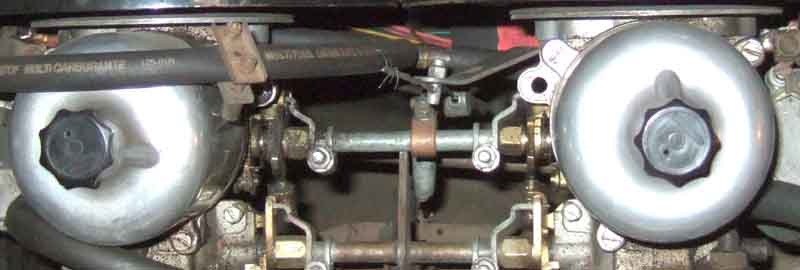
But despite the rib there is no drilling inside the neck of the piston cover:
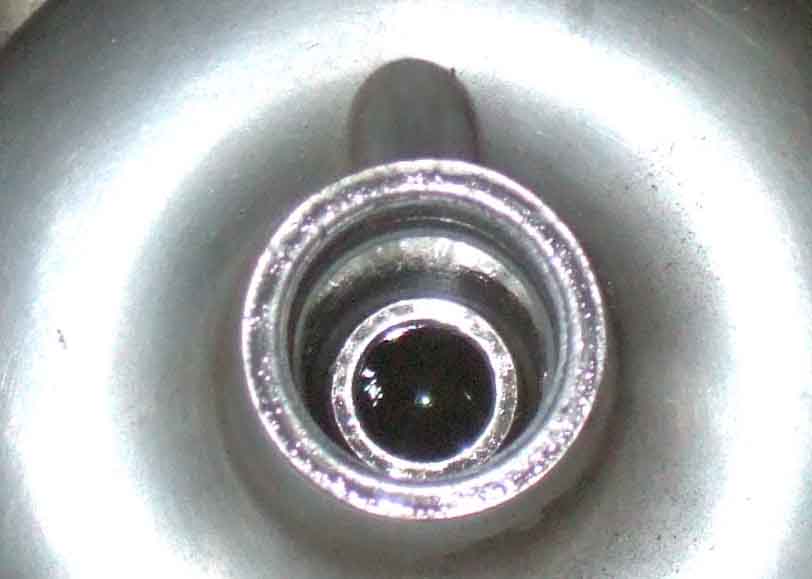
A drilled cap allows the space above the oil filled damper to vent to atmosphere as the piston rises and falls and not add further damping on the rise or retardation of the fall. But each time it falls it will draw air in, along with any dust that is in the atmosphere.
Internally vented covers have the rib drilled, which allows the space above the oil-filled damper to vent to the area above the main part of the piston as the piston moves up and down, without drawing in air from outside. These are known as 'dust-proofed' covers. Do not use vented damper caps with vented covers or piston movement will be affected adversely: (Jaguar Clubs of North America)
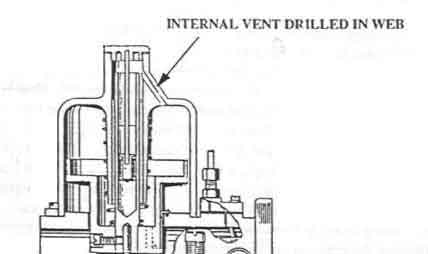
75 V8 HIF carbs with no rib, and no breather holes. So what equalises the pressure as the piston goes up and down? Maybe via the ball-bearing suction chamber arrangement?
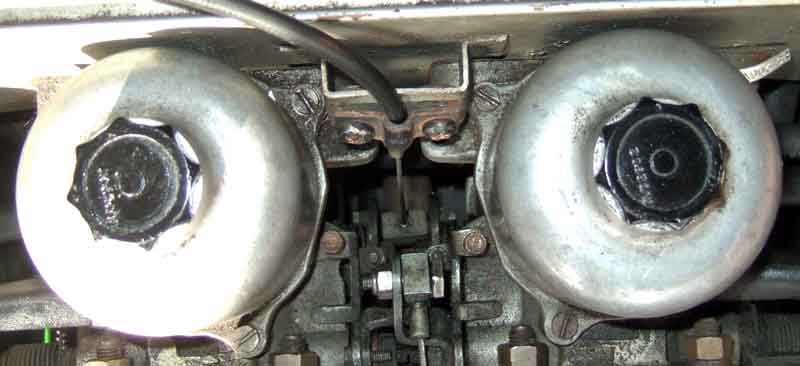
78 roadster HIF carbs with ribs and breather holes:
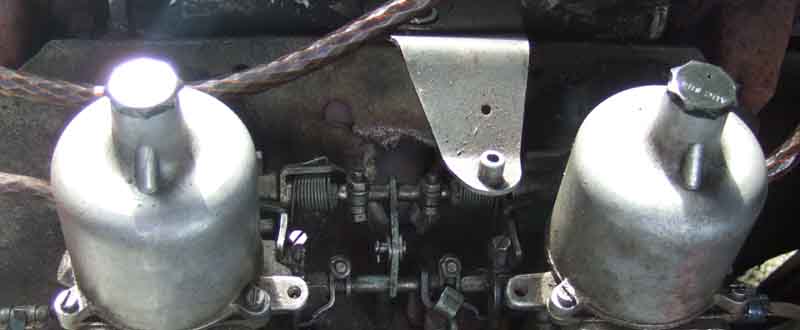
HS carbs with the ribs pointing in different directions, and the fixing screws on the engine side angled towards each other i.e. a mirror image. This gives different cover and piston rotational alignment between the two carbs:
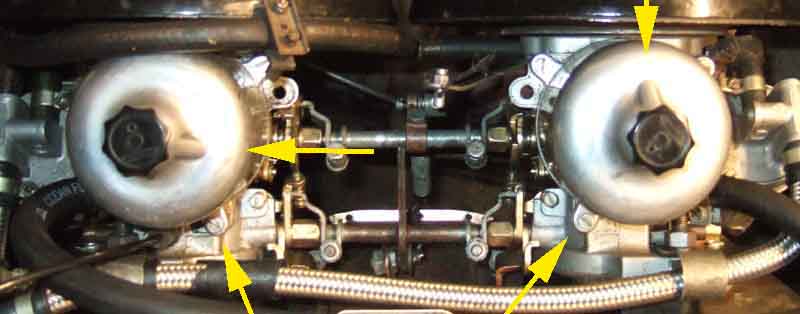
Late HIF carbs with both ribs pointing at the air cleaners, and both engine-side screws angled rearwards. This gives the same cover and piston rotational alignment on both carbs: (Peter Bonsall)
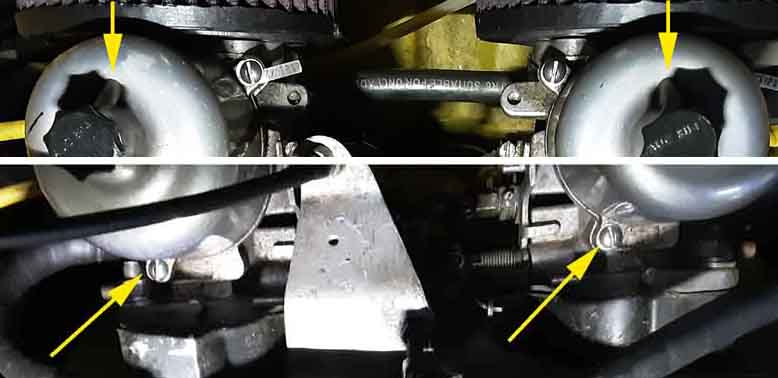
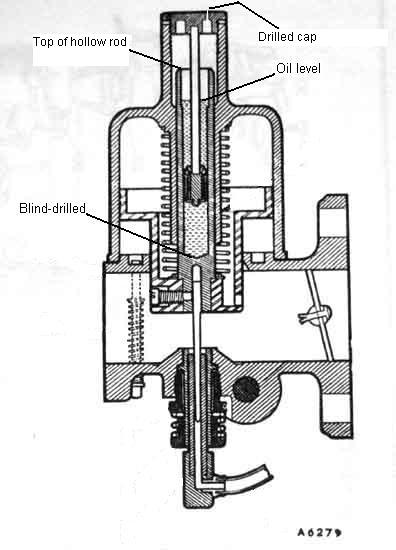
Leyland Workshop Manual: HIF carb, piston cover has the rib which implies an internal breather and sealed cap (but see below), oil level shown above top of the hollow rod:
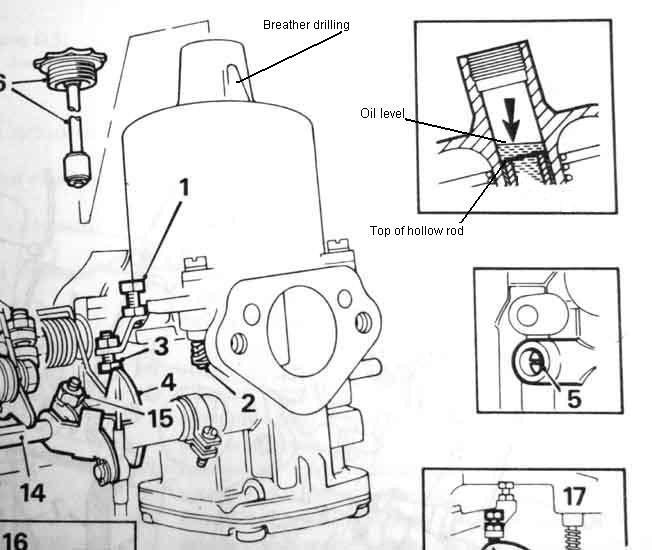
Same carb, oil reservoir is through-drilled and plugged:
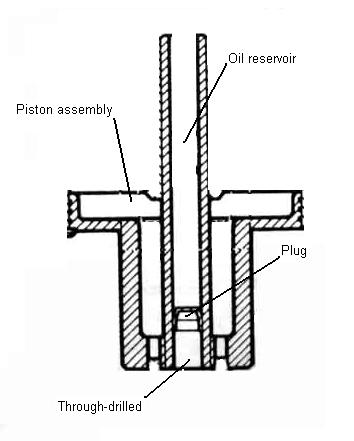
SU Technical document: HS carb, drilled cap, oil level below the top of the hollow rod:
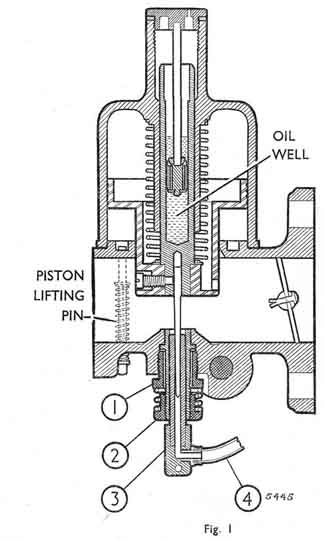
SU Technical document: HIF carb, no ball bearings on the left, early ball bearings on the right, both showing the oil level below the top of the hollow rod:
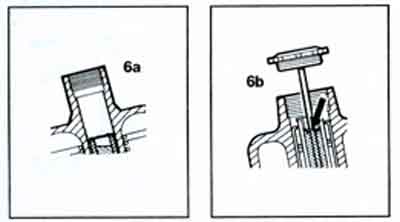
Damper: Solid disc above the damper and circlip at the bottom. When the piston starts to move up the oil in the damper tube lifts the damper up the damper rod until it reaches the solid disc. That closes off the hollow centre of the damper so no oil can pass through. At that point the piston can only rise further as oil escapes through the small clearance between the outside of the damper and the sides of the oil chamber. However when the piston is falling it pulls the damper downwards, opening up the space at the top, and the circlip at the bottom mean that both ends of the damper are 'open'. Thus oil can move freely through the centre of the damper, allowing the piston to fall without any restriction:
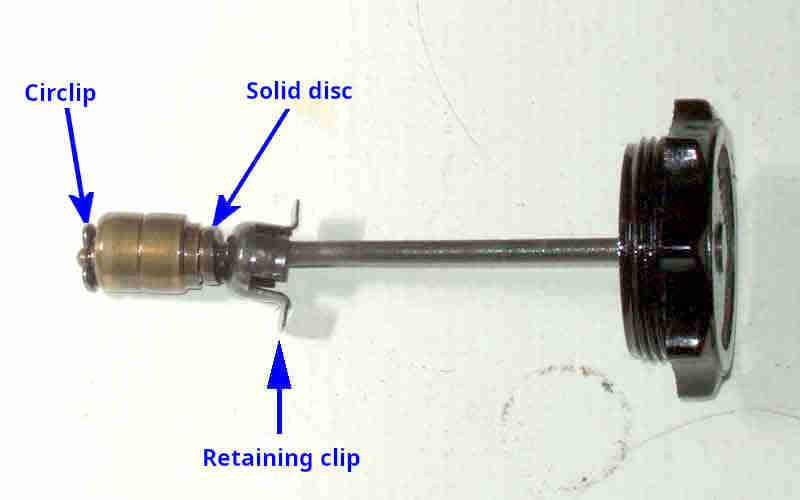
Later carbs have a retaining clip on the damper rod which pushes into the top of the oil reservoir. This prevents the damper being completely removed to avoid dampers and pistons being mixed up if both are removed at the same time.
